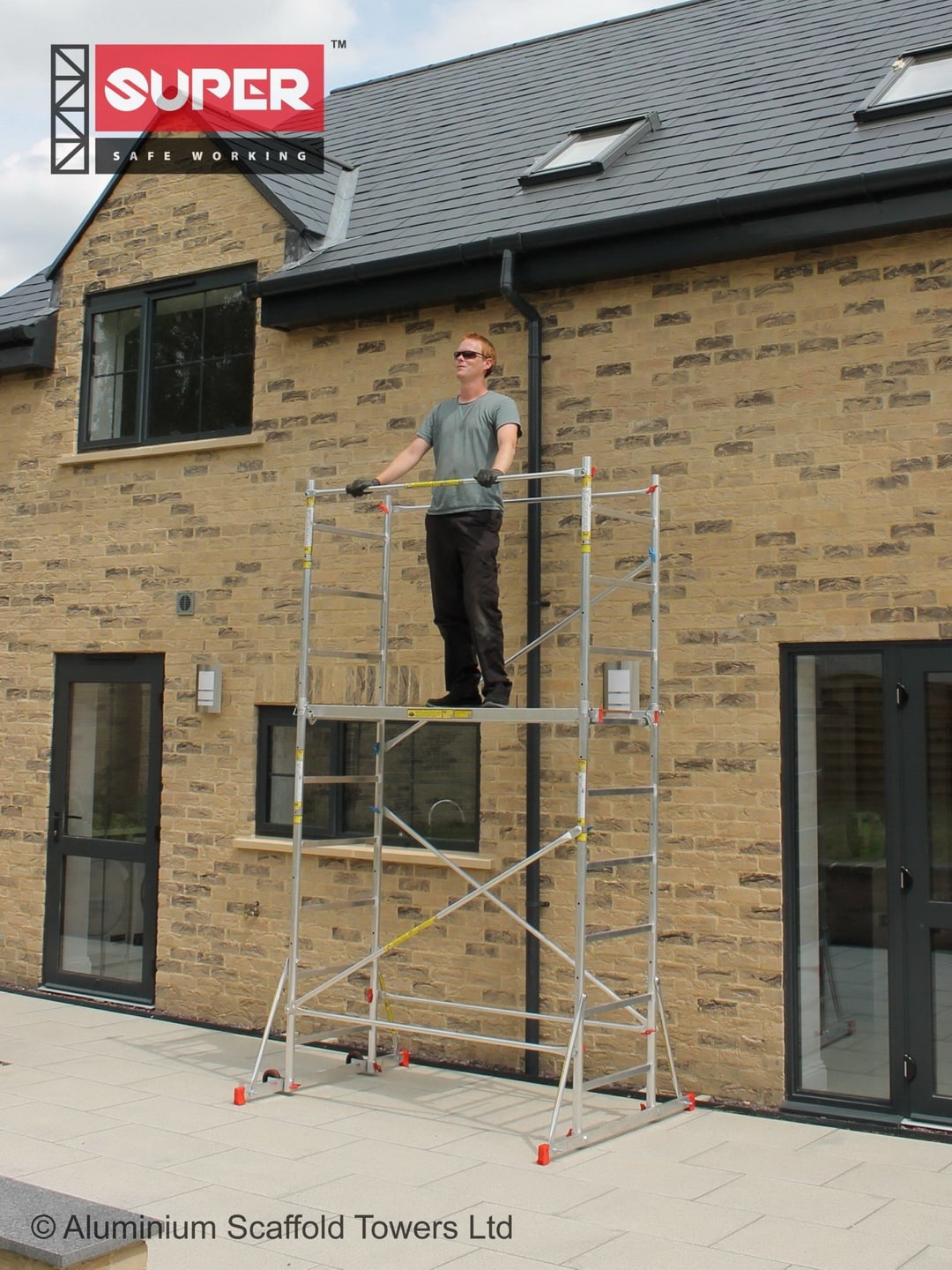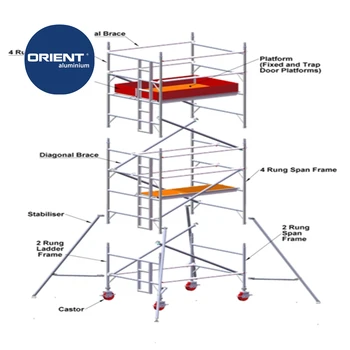Precision in Erection: Scaffolding That Stands Tall
Scaffolding in High Winds: Safety Precautions and Tips ======================================================
In high winds, prioritize scaffolding stability through wind lots computations and proper style. Assurance protected anchoring utilizing techniques like ground screws and tie-downs. Normal examinations and upkeep checks are essential for safety. Equip workers with crucial PPE and safe tools and materials. Develop emergency situation feedback treatments, consisting of training and communication plans. A comprehensive scaffold security plan boosts readiness. Mitigate dangers with routine drills and technique. Enhance security by recognizing evacuation courses and designating emergency situation leaders. For a comprehensive understanding of scaffolding safety and security in high winds, adhere to these standards.
Wind Ranking for Scaffolding
When assessing the wind rating for scaffolding, it is important to take into account the architectural stability and security of the scaffolding system under different wind rates. Scaffolding style plays a substantial role in identifying its capacity to stand up to differing wind lots. Correct wind lots estimations are important to guarantee that the scaffolding can safely sustain workers and products in windy problems.
The layout of the scaffolding must think about factors such as the elevation of the structure, the spacing of cross braces, and the kind of products utilized. These components contribute to the overall security of the system when revealed to wind pressures. Wind lots calculations involve examining the wind stress on the scaffolding based on elements like the geographical area, typical wind speeds, and the surface area of the framework.
Correct Securing Strategies
When setting up scaffolding in high winds, correct anchoring methods are vital to ensure stability and safety. Safe and secure base support, wind-resistant tie-downs, and routine assessment checks are bottom lines to contemplate for effective anchoring.
Secure Base Support
Using efficient anchoring strategies is crucial for ensuring the security and safety of scaffolding in high winds. Base stability is crucial in holding up against the pressures exerted by solid winds. Appropriately anchoring the scaffolding to a strong structure, such as a concrete slab or sturdy ground, helps distribute the wind pressure and protect against tipping or collapsing.
The assistance framework must be safely fastened to the base to enhance wind resistance. Supports like screw-in ground anchors or heavy weights can be utilized to enhance the scaffolding's stability. By making certain a safe and secure base support via ideal anchoring strategies, the scaffolding ends up being much more resilient against wind forces, lowering the risk of accidents and boosting total security on the worksite.
Wind-resistant Tie-downs
To boost the security and wind resistance of scaffolding in high winds, applying wind-resistant tie-downs through proper anchoring strategies is vital. Tie-down efficiency is critical in ensuring the scaffolding can endure strong winds.
Making use of wind-resistant products for tie-downs, such as heavy-duty straps or cords, can significantly enhance the overall stability of the structure. When securing the scaffolding, it is very important to safeguard the tie-downs to secure and unmovable frameworks, such as the building itself or ground anchors.
Proper tensioning of the tie-downs is additionally crucial to avoid any slack that might jeopardize the efficiency of the anchoring system. By utilizing wind-resistant tie-downs and adhering to correct anchoring methods, the scaffolding can better stand up to high winds and make certain a much safer workplace.
Routine Inspection Checks
Regular examination checks play a crucial role in assuring the proper anchoring techniques of scaffolding are kept to endure high winds successfully. Examination frequency should adhere to safety and security standards, which normally need examinations prior to initial usage, after any occasion that could influence security, and at normal periods afterwards.
These checks guarantee that anchoring systems are secure, connections are tight, and elements are without damages or degradation. Evaluations ought to include confirming the stability of tie-down points, ensuring proper tension in tie-down systems, and taking a look at the condition of anchor screws or screws.
Any type of problems recognized during evaluations should be without delay resolved to stop structural failings and guarantee the security of workers and the general public.
Evaluation and Maintenance Protocols
Upkeep timetables must be strictly stuck to in order to assure the architectural honesty of scaffolding in high wind conditions. Regular examinations are necessary to recognize any kind of problems without delay and make sure the security of workers. Right here are bottom lines to think about:
Maintenance Schedule: Develop a detailed maintenance schedule that includes routine look for wear and tear, deterioration, and architectural security.
Evaluation Checklist: Utilize a comprehensive assessment checklist that covers all important parts such as joints, connections, and base plates.
Safety and security Training: Make sure that employees performing assessments are sufficiently trained in scaffold safety and security and examination methods.
Devices Screening: Conduct routine screening of devices such as guardrails, toe boards, and tie-offs to verify their effectiveness.
Individual Safety Tools (PPE)
Personal Safety Devices (PPE) is important for making certain the safety of employees on scaffolding, particularly in high winds. This includes equipment such as construction hats, handwear covers, safety harnesses, and non-slip shoes.
Proper upkeep and normal inspections of PPE are necessary to assure their performance in protecting employees at raised elevations.
Important PPE for Employees
Workers engaging in scaffolding activities in high winds need to be equipped with necessary Personal Safety Devices (PPE) to assure their safety and security at work website. The complying with PPE is important for workers in such problems:
- Hard hats to shield the head from dropping things
- Safety belt to prevent falls from heights
- Security safety glasses to protect the eyes from particles and wind
 * High-visibility vests to ensure exposure in low-light and high-wind situations
* High-visibility vests to ensure exposure in low-light and high-wind situations
Correct upkeep of PPE is vital to guarantee its effectiveness, and tool safety and security steps need to be in area to avoid objects from falling off scaffolding, jeopardizing workers below. By focusing on making use of appropriate PPE, workers can alleviate risks and job securely in difficult atmospheres.
Correct PPE Maintenance
To ensure the efficiency of safety gear, regular assessment and upkeep of the necessary devices used by individuals in high-wind scaffolding environments is essential. Routine PPE inspection is important to make sure that the gear continues to be in excellent problem and supplies the essential defense.
Security guidelines advise checking for any type of signs of damage, such as tears, splits, or weakened bands, and promptly replacing any jeopardized equipment. Furthermore, proper storage space of PPE when not being used is fundamental to prevent deterioration and preserve its effectiveness.
Normal cleansing and maintenance following producer instructions can assist lengthen the lifespan of the equipment and see to it that it functions as planned in high-wind problems, shielding employees from possible hazards.
Securement of Devices and Products
Making sure that devices and materials are appropriately secured is essential when working on scaffolding in high winds to avoid crashes and maintain a secure workplace. Proper device organization and material storage space techniques play a pivotal duty in avoiding objects from coming to be harmful projectiles. Furthermore, regular equipment upkeep is crucial to assure devices are in excellent working condition and much less likely to malfunction in tough weather conditions. Safety and security training is likewise important for all workers associated with scaffolding tasks, as it furnishes them with the understanding and skills required to take care of devices and materials securely even in negative weather.
- Protect Tools: Usage device belts or tethering systems to stop tools from dropping.
- Secure Material Storage: Stack products securely to stop them from being blown away.
- Regular Devices Checks: Check devices routinely to determine and deal with any type of problems quickly.
- Comprehensive Security Training: Guarantee all employees are trained in correct tool handling and storage space treatments to lessen threats.

Emergency Situation Action Procedures
In the event of unanticipated emergency situations while working on scaffolding in high winds, swift and well-coordinated response procedures are vital to guarantee the safety and security and well-being of all individuals entailed. scaffolding for sale Carrying out routine emergency drills can help familiarize employees with discharge procedures and make sure a quick and efficient response in case of emergency situations. It is essential for all workers to be skilled in the evacuation paths and setting up points to facilitate a smooth and orderly evacuation process. Furthermore, designating details people to take cost during emergency situations and interact instructions clearly to all employees can help prevent panic and complication.
Emergency response procedures should be clearly outlined in the scaffolding security plan, detailing detailed instructions on exactly how to reply to various sorts of emergency situations, such as high winds, equipment failing, or medical occurrences. Regularly reviewing and practicing these procedures can assist guarantee that all workers are prepared to respond properly in high-stress circumstances. By prioritizing emergency situation preparedness and reaction training, employees can minimize risks and improve general safety and security when working with scaffolding in high winds.
Frequently Asked Questions
Can Scaffolding Be Used in Extreme Weather Conditions Such as Hurricanes or Tornadoes?
Scaffolding needs to not be utilized in extreme climate condition like typhoons or tornadoes as a result of security risks. Emergency procedures have to remain in location, and making use of wind-resistant products can reduce potential dangers associated with strong winds.
Are There Any Kind Of Specific Weight Purviews for Scaffolding in High Wind Locations?
Weight limitations and wind stability are crucial factors in making sure the safety of scaffolding in high wind areas. These restrictions vary based upon the scaffolding kind and layout. Following manufacturer standards and sector criteria is important.
How Commonly Should Scaffolding Be Checked for Wind Damages?
Constant wind damage control are important to assure the security and integrity of scaffolding structures. Assessments should be carried out at least weekly or after any kind of substantial climate occasion to recognize and address potential hazards immediately.
What Type of Individual Protective Tools (Ppe) Is Advised for Servicing Scaffolding in High Winds?
When working on scaffolding in high winds, it is vital to focus on safety and security by wearing proper personal safety devices (PPE) such as helmets, safety harnesses, and non-slip footwear. Carrying out these preventative measures can help protect against mishaps and warranty tool safety.
How Should Tools and Materials Be Protected on Scaffolding to avoid Them From Being Blown Away in Solid Winds?
To stop devices and materials from being surprised in strong winds on scaffolding, safeguard them making use of correct device company methods and wind-resistant fastening techniques. Carrying out precaution such as tethering devices and weighting down materials can reduce risks.
Final thought
To summarize, guaranteeing the safety of scaffolding in high winds needs adherence to wind score guidelines, proper anchoring methods, regular examination, and upkeep.
It additionally entails using individual safety tools, securement of devices and products, and expertise of emergency reaction treatments. By complying with these precautions and suggestions, employees can reduce the danger of crashes and injuries while servicing scaffolding in windy problems.